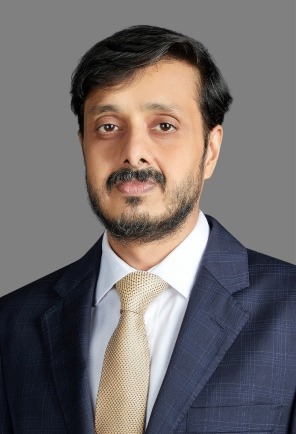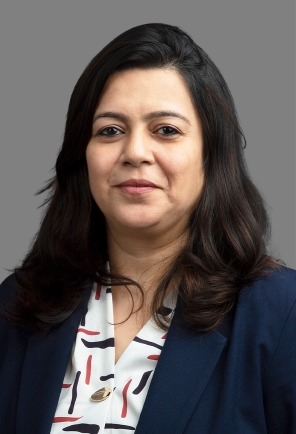Duality of Co-existence and Oligopoly driving India’s Fintech Sector: Beams and A&M Report
Key Highlights:
- India’s fintech ecosystem has witnessed the entry of over 10,000+ new players in the past decade, having raised nearly USD 200 billion in total capital.
- The financial services sector has undergone a profound transformation powered by a unique interplay of policy innovation, public digital infrastructure, and private sector adoption, prompting both FIs and fintechs to adapt.
- UPI has become the core of digital payments, accounting for ~83-84% of retail payment volumes in FY25 and processing ~186 billion transactions worth ~USD 3 trillion.
- India remains the world’s largest cross-border remittance market, with inflows of ~USD 33 billion in Q1 FY26 alone, creating tailwinds for cross-border payment tech platforms.
- Co-lending and distribution tie-ups are becoming mainstream as banks and NBFCs partner with fintech originators, while super-apps channel credit for partner lenders.
- The insurtech and wealthtech sectors are evolving, with over 120 insurtech startups transforming distribution, underwriting, and claims, while wealthtech is advancing the financialization of savings through digital brokerage, curated portfolios, and alternative investment offerings.
- The report frames India’s financial services landscape as a dual track of co-existence and oligopoly: interoperable infrastructure enables many front-ends to thrive, while scale and network effects concentrate merchant and operations layers, especially in payments.
Mumbai, 7th October 2025 – India’s fintech sector, one of the fastest-growing globally, is at a critical inflection point, shaped by the convergence of digital public infrastructure, progressive regulation, and a vast underserved consumer base. While the ecosystem continues to attract robust investor interest and innovation, evolving challenges around profitability, compliance, and scale are redefining its trajectory.
At the 2025 Global Fintech Festival, Beams Fintech Fund in partnership with Alvarez & Marsal (A&M) unveiled a report on India’s fintech ecosystem. The report provides a comprehensive view of the sector, covering six major segments – payments, banking, lending, banking and lending infrastructure, insurtech, and wealthtech – and outlines how innovation, regulatory shifts, and investment trends are reshaping the landscape.
The report highlights a fundamental duality driving the sector: while open digital infrastructure and interoperable frameworks such as UPI, Aadhaar, and the Account Aggregator ecosystem have created a highly inclusive, innovation-led market with widespread participation, growing advantages in data, distribution, and compliance are simultaneously leading to consolidation, with a smaller number of platforms emerging as dominant nodes.
This duality can be seen even in the lending segment, which is the largest recipient of fintech funding (~38%) with $7.2 billion raised since 2020. Growth in this segment is fueled by the demand for seamless, digital-first personal credit. Disbursements by fintech NBFCs have grown by a CAGR of 88% between FY22-24 to reach USD 17 billion, outpacing traditional players on growth by leveraging technology, alternative data, and digital-first distribution. This has created room for a range of models to co-exist, from co-lending partnerships and vertical SaaS platforms to AI-driven underwriting and embedded lending through e-commerce and ERP systems. However, asset quality considerations and regulatory oversight are reinforcing the need for fintechs to partner with traditional NBFCs and banks, which continue to anchor the balance-sheet strength of the ecosystem.
Similarly in payments, open infrastructure has created one of the most inclusive ecosystems globally. UPI now processes 83–84% of transaction volumes in FY25, making it the backbone of retail payments. Coexistence of multiple niche players is visible in the cross-border payments space. While the consumer interface has a few dominant players, it has a long tail of companies that are likely to coexist. The merchant UPI interface and payment gateways/aggregators are likely to be more concentrated. As volumes rise and use cases expand, the focus is increasingly shifting to the technology platforms that enable banks and fintechs to manage scale, compliance, and integration seamlessly.
Sagar Agarvwal, Founder & Managing Partner, Beams Fintech Fund, added, “Investor confidence remains strong because the opportunity in India’s fintech ecosystem is both deep and broad. Capital continues to flow into areas where technology is reshaping financial services, from embedded finance and compliance-related platforms to B2B SaaS models that power risk, underwriting and integration. As the report highlights, these technology-led themes are reinforcing the maturity of the sector and positioning Indian fintechs to play a larger role both in domestic and global markets.”
Banking technology today has moved from isolated point solutions to integrated, full-stack platforms that cover banking-as-a-service, compliance, KYC/AML, and risk management. Companies such as Perfios, Karza, and M2P are now critical partners for banks and NBFCs, enabling faster product launches and supporting regulatory agility. Many of these platforms are also scaling internationally, exporting India’s API-first and compliance-native models to Southeast Asia and the Gulf.
Insurance is undergoing a similar transformation, moving beyond traditional distribution into technology-led models that cover underwriting, claims, and embedded protection. More than 120 Insurtech ventures are now active in India, ranging from PoSP enablers and digital distributors to B2B SaaS platforms that power AI-driven underwriting and claims automation. The breadth of distribution ensures space for multiple players to participate. However, areas such as risk analytics and claims processing continue to be more concentrated, rewarding platforms with the ability to operate at scale. These shifts are not only redefining how insurance is delivered in India but are also creating opportunities for solutions to expand into international markets.
In recent years, wealthtech has become a major focus, with many players aiming to digitise and democratise investing for a broader base of consumers and institutions. On the consumer side, broking has consolidated around a handful of large players, while newer entrants are shifting toward differentiated offerings such as thematic advisory and alternative investments. On the enterprise side, SaaS platforms and APIs for compliance, onboarding, and embedded investing are gradually being adopted by banks and brokers. Despite this progress, the economics of the segment remain challenging, with fee-light structures limiting monetization and slowing scale. As a result, fragmentation is likely to persist, even as select players begin to capture adjacent opportunities through partnerships with larger financial institutions.
Bhavik Hathi, Managing Director and Co-Lead Global Transaction Advisory Group, Alvarez & Marsal, said, “Fintechs are now deeply integrated into the fabric of financial services, moving beyond disruption to become essential partners to banks and NBFCs. The report shows how they are embedding themselves across the lifecycle of credit, payments and other services, building models that combine scale with resilience. This marks an important shift towards a more interconnected ecosystem.”
The evolution across segments shows the maturity of India’s fintech sector. 10,000+ fintechs have been launched in the past decade, raising a total capital of USD 200 billion, with recent funding flowing into fintech business models that combine profitability with technology-led innovation. Scale, regulation, and technology are reshaping the foundations of the sector, creating an industry that is broader, deeper, and more complex, where innovation and inclusion will continue to drive growth.
About Alvarez & Marsal
Founded in 1983, Alvarez & Marsal is a leading global professional services firm. Renowned for its leadership, action, and results, Alvarez & Marsal provides advisory, business performance improvement, and turnaround management services, delivering practical solutions to address clients' unique challenges. With a worldwide network of experienced operators, world-class consultants, former regulators, and industry authorities, Alvarez & Marsal helps corporates, boards, private equity firms, law firms, and government agencies drive transformation, mitigate risk, and unlock value at every stage of growth.
To learn more, visit: AlvarezandMarsal.com.
About Beams Fintech Fund
Beams Fintech Fund is a Mid-market Private Equity Fund focused on investing in category-leading Fintech, Financial Services, and B2B SaaS companies. With a diversified portfolio of high-growth businesses, Beams partners with visionary founders to drive scale, profitability, and long-term value creation. The current portfolio of the Fund includes Niyo, Progcap, Credgenics, Insurance Dekho, SK Finance & Infinity Fincorp. Beams has built a strong ecosystem of Domestic & Global Banks, Insurance Companies, NBFIs and Fintech firms as investors to serve not only as a strategic growth capital provider but also to drive tangible value for its portfolio companies.
To learn more, visit: https://beams.vc/



